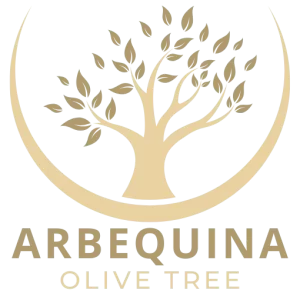It can be frustrating when your olive tree looks healthy but fails to produce any olives. If your Arbequina is not producing olives, there are a number of common reasons this can happen (and most have solutions). In this guide, we’ll walk through the typical olive tree not fruiting causes and how to address each one. With a little troubleshooting, you’ll be on your way to enjoying home-grown olives.
1. Tree Age (Maturity): Olive trees, including Arbequina, take a few years to mature enough to bear fruit. If your tree is still young (under about 3-5 years old), it may not have started producing olives yet. This is normal – the tree needs time to establish itself. Solution: Be patient and continue providing good care. Once an Arbequina olive reaches maturity, it usually starts flowering and fruiting annually.
2. Not Enough Sunlight: Olive trees need plenty of sun to produce olives. An Arbequina olive tree ideally requires 6-8+ hours of direct sunlight a day. If your tree is in too much shade (planted near taller trees or too far from a bright window if kept indoors), it may grow leaves but fail to set fruit. Solution: Move potted olives to a sunnier spot or trim back surrounding vegetation if possible. Ensure your olive gets ample sun, especially during spring and summer when it forms buds and flowers.
3. Climate and Temperature Issues: Temperature extremes or unusual weather can also impact fruiting. A late spring frost may kill developing flower buds, and very hot, dry winds during bloom can cause flowers to drop. Additionally, olive trees benefit from a period of cool winter temperatures to encourage good flowering; without some winter chill, they may bloom poorly. Solution: Unfortunately, you can’t control the weather – often the only solution is to wait for next year. In areas with very mild winters, try to give the tree some exposure to cooler temperatures in winter (for instance, placing a potted tree in a cool, sheltered spot) to stimulate better bloom.
4. Lack of Pollination: Arbequina olive trees are self-fertile, so they don’t strictly require a second tree to produce fruit. However, pollination can still be a limiting factor, especially for indoor or sheltered trees. Olives are mostly wind-pollinated; if your tree is indoors or in a very still corner, the pollen might not be moving around to fertilize the flowers. Solution: If your tree blooms (small white-yellow flowers) but sets no olives, try gently shaking the branches daily during bloom to spread pollen (this mimics the wind). For indoor trees, you can also use a small soft brush to hand-pollinate flowers. And if you have space, a second olive tree nearby can sometimes increase fruit yield through cross-pollination.
5. Improper Feeding or Watering: How you care for your olive can affect fruiting. Too much nitrogen fertilizer can cause lots of leafy growth at the expense of flowers and fruit. (For example, an olive planted near a heavily fertilized lawn may grow very lush but bear few olives.) Water stress is another factor – both overwatering and underwatering can cause a tree to drop flowers or not form fruit. Solution: Use a balanced fertilizer in early spring. Avoid high-nitrogen fertilizers once your tree is mature. Water the tree consistently, especially during flowering and fruit formation – not too little and not too much. Make sure the soil drains well (soggy roots can harm fruiting, and severe drought stress can too).
6. Pruning at the Wrong Time: Pruning is important for olive tree health, but timing matters for fruiting. If you prune aggressively at the wrong time of year, you might remove the very wood that would have produced this year’s olives. Remember, olives form on last year’s growth. If you heavily pruned your Arbequina late last fall or over the winter and cut off most of last year’s branches, the tree may have few buds left to flower. Solution: Do only light shaping in fall. Save major pruning for late winter or early spring, and even then try not to remove all the young wood. Always leave some of the previous year’s growth when pruning so there are buds for fruiting. If over-pruning was the issue, the tree should recover next year – just prune more conservatively moving forward.
7. Pests or Diseases: Certain pests or diseases can hinder fruit production. For instance, heavy infestations of scale insects or mites on the tree can weaken it or damage flower buds, resulting in poor fruit set. Certain fungal diseases that stress the tree (like a bad case of olive leaf spot) might also reduce fruiting. Solution: Inspect your olive tree for signs of pests (sticky residue, tiny insects, unusual spots on leaves or stems). Treat any infestations accordingly – for example, use insecticidal soap or horticultural oil for scale and aphids, or appropriate organic fungicides for leaf spot. Keeping your tree healthy and well-maintained (proper watering, not over-fertilizing, good airflow through pruning) will make it less susceptible to these issues.
In summary, an olive tree failing to fruit is usually due to one (or a combination) of these factors. By identifying the cause, you can take steps to correct it. Whether it’s giving your tree another year to mature, moving it into brighter sun, adjusting your care routine, or lending a hand with pollination, you can improve your Arbequina’s chances of producing olives. With a bit of patience and the right care, your olive tree should reward you with a bountiful harvest in seasons to come!
